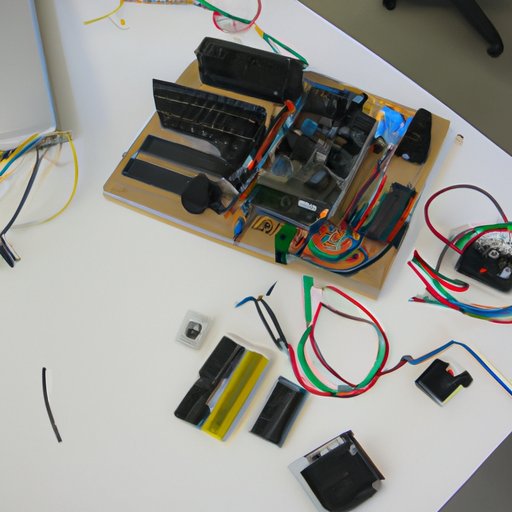Introduction
Robotics is a rapidly expanding field of technology that has applications in many areas of life. From autonomous cars to industrial machines, robots are becoming an increasingly common fixture in our daily lives. If you’re interested in learning how to build a robot, this guide will take you through the entire process, from research and design to programming and testing.

Research and Understand the Basics of Robotics
Before you begin building your robot, it’s important to understand the basics of robotics. There are numerous sources for learning about robotics, such as online tutorials, books, and even college courses. Additionally, it’s helpful to familiarize yourself with the different types of robotics and their purposes. For example, there are industrial robots used for manufacturing processes, service robots used for tasks like vacuuming floors, and consumer robots used for entertainment.

Learn Programming Languages Used for Robotics
Programming languages are essential for controlling robots. Commonly used programming languages for robotics include Python, C++, Java, and MATLAB. Learning a programming language for robotics can be beneficial because it allows you to write code for your robot’s functionality, making it easier to control and debug. Additionally, understanding the basics of programming can help you troubleshoot any issues you may encounter while building your robot.
Select a Platform for Building Your Robot
Once you’ve done your research and learned a programming language, it’s time to select a platform for building your robot. There are several platforms available, such as Arduino, Raspberry Pi, and LEGO Mindstorms. When selecting a platform, consider factors such as the cost, ease of use, and compatibility with other components.

Design and Build the Physical Components of Your Robot
The next step in building your robot is designing and constructing its physical components. This involves gathering the necessary tools and materials, such as motors, batteries, and sensors. Additionally, you’ll need to create a schematic that outlines the design of your robot. Once you have a plan, you can start assembling the components and wiring them together.
Program Your Robot to Perform Its Desired Functionality
Once your robot is built, you’ll need to program it to perform its desired functionality. Writing code for the robot can be a complex task, so it’s important to have a thorough understanding of the programming language you’re using. Once the code is written, you’ll need to test the robot to ensure it works properly.
Conclusion
Building a robot can be a rewarding experience, but it requires a lot of planning and preparation. As outlined in this guide, the process of building a robot involves researching and understanding the basics of robotics, learning a programming language, selecting a platform, designing and constructing the physical components, and programming the robot to perform its desired functionality. With patience and dedication, you can build a robot that will bring your ideas to life.
(Note: Is this article not meeting your expectations? Do you have knowledge or insights to share? Unlock new opportunities and expand your reach by joining our authors team. Click Registration to join us and share your expertise with our readers.)
